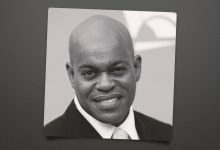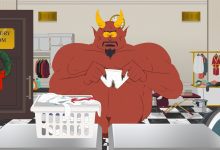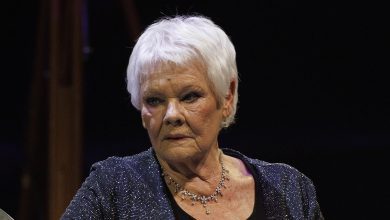How ‘Severance’ DP Jessica Lee Gagné Turned the Series’ Most Ambitious Episode Into Her Directorial Debut
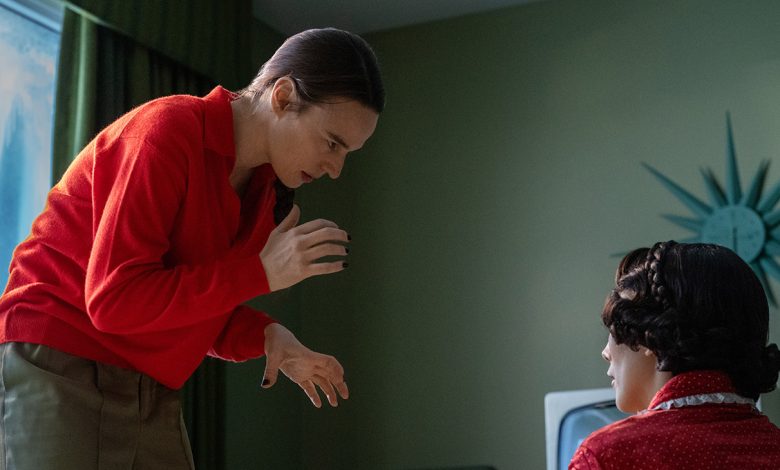
[This story contains spoilers for Severance season two.]
Severance cinematographer-turned-director Jessica Lee Gagné was ready to bid adieu to the hit Apple TV+ series prior to its second season.
Of course, she cherished her time on 2022’s newest — and one of only a few remaining — water-cooler shows, especially her yearslong collaboration with in-house director/EP Ben Stiller. (The pair previously helmed Escape at Dannemora together.) The Quebec native had shot Lumon Industries’ Severed Floor and its signature white hallways in so many different ways that she was simply ready to create a new visual vocabulary somewhere else. She even rejected an offer to make her directorial debut during season two, but then everything changed as soon as she read a summary of the series’ most ambitious episode, “Chikhai Bardo.”
“[Directing] is often proposed to cinematographers so they come back for another season. So I said no at first, but then I read the synopsis of season two, and episode seven really struck me as something that I could do and should do,” Gagné tells The Hollywood Reporter. “I really had to look at myself in the mirror because I had blocked this desire out ever since film school. So I was like, ‘Okay, it’s now or never.’”
Co-written by Mark Friedman and series creator Dan Erickson, Gagné’s episode chronicles multiple timelines, including the backstory of how Mark (Adam Scott) and Gemma (Dichen Lachman) Scout first fell in love and struggled to bear children, before Lumon faked the latter’s death in a car accident. One of the episode’s other timelines simultaneously details Gemma’s horrific experience as an imprisoned lab rat on the Testing Floor of Lumon. She’s regularly subjected to experiments that test the effectiveness of her 25 innie personas.
The now critically lauded episode gave Gagné everything she’d been seeking, as Gemma’s Testing Floor nightmare and the Scouts’ filmic flashbacks allowed her to design new dimensions within the show. Moreover, with so much of the episode centered on Gemma’s past infertility and present captivity, Gagné felt extra protective of the female-driven narrative.
“As the cinematographer of the show, I really wanted to be the one creating that language. Selfishly, I didn’t really want to let anyone else do that,” Gagné says. “Also, as a woman, I just felt that it needed to be a woman directing. It was an instinctive gut feeling, and I wanted to defend this episode.”
Below, during a recent FYC conversation with THR, Gagné also discusses why her filmmaking career feels preordained, as well as what’s next for her directorial career.
***
You were literally raised in a video store; your father owns a local chain in Quebec. Does your filmmaking career feel predestined in a way?
Now that I look back on it, yes. It does. It almost sounds weird to say that, but it does feel like I was put in these environments that have made me who I am. I also had to break through some of that, but it feels like it was always there.
Severance star Christopher Walken made headlines when he said that Apple sends him DVDs because he doesn’t have a steaming-capable setup. Do you send your dad DVDs for a similar yet different reason?
It’s so funny you talk about that. He hasn’t seen Escape at Dannemora, nor has he seen Severance. He’s always had issues with Netflix. Netflix was the first one [to disrupt video stores], and he purposefully chose not to get that service. But he recently joined Apple TV+, and he’s figuring out how Apple TV+ works on his new TV. So the video store man will be watching Severance soon.
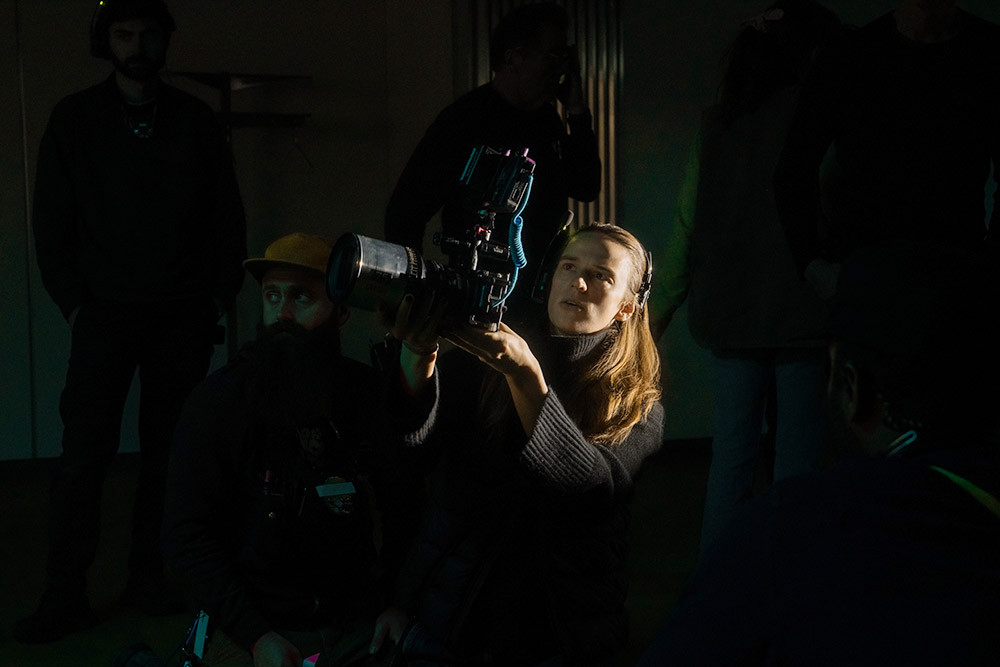
In film school, you probably got a taste of almost every job on a film set, so what made you go the way of cinematography first?
In Quebec, there’s something called CEGEP. It’s basically a two-year college program in between high school and university. You have classes that are specific to what you want to study, but you’re still taking philosophy and French and all of that. But I didn’t know anyone at that school. It was a new territory for me, and it was my first time going to French school. So I recruited people in each film class, saying, “Hey, who wants to make movies with me?” We then started a club, and we started making films together.
Most of us have now moved on to actually working in the film industry, and as a DP, I made my first feature with one of those people: Chloé Robichaud. Her film [Sarah Prefers to Run] went to Cannes, and having that experience, I realized soon that a lot of friends wanted me to shoot their projects. I found that very flattering and very comforting, and it created a bit of a safe space for me to move through. I was afraid of the risk that directing is, not knowing if you’re ever going to get work or get paid to do this stuff. So there was a desire for me to shoot other people’s projects, and that’s what made me first gravitate into that world.
Ben Stiller responded to your work in 2017’s Sweet Virginia, and so he hired you to photograph 2018’s Escape at Dannemora. Based on the response to the latter, did you have a strong feeling that you’d reteam with him at some point?
Yeah, we felt it during the project. We spoke the same language, and we liked the same things. I had been trying to find that kind of partnership with past filmmakers in Canada and France. I’d worked with independent filmmakers who had very strong voices that I respected a lot, but it never felt like it was my thing. They came in with a very precise aesthetic, and it wasn’t the way I wanted to move a camera or play with lighting. It was always a little different.
So when Ben and I collided, we really wanted to create the same kind of language, but I had come from a smaller filmmaking world. Before Dannemora, I didn’t even know what a Libra head was, which is a remote head [or a digitally stabilized camera mount]. I never had access to those kinds of tools, so there was a mind-blowing moment [on Dannemora] of, “This is what happens when anything is possible.”
Severance begins to hatch the following year in 2019, and while production was delayed until late 2020, you DP’d all of season one. When did talk of directing begin?
It happened when we were talking about starting up season two. I wasn’t interested in coming back for season two just because I love creating new language and world building. Doing something new is motivating for me, and after season one, I couldn’t imagine what season two was going to be. If you had lived that experience in those hallways and in that world, it’s hard to see yourself going back there again. I did anything I could to make it visually different every time, but I was ready to move on and do something else.
Then they basically asked me if I was interested in directing, which is often proposed to cinematographers so they come back for another season. So I said no at first, but then I read the synopsis of season two, and episode seven really struck me as something that I could do and should do. So I asked myself the question, “Do you want to direct?” I really had to look at myself in the mirror because I had blocked this desire out ever since film school. I got tunnel vision within cinematography.
I now understand the reason why I wasn’t ready to try directing before. I needed the experience of cinematography. I needed to go through some things in my personal life as well to be able to open that door. Severance is very high stakes when you think about the amount of people who love the show, but there was never going to be a softer landing than this for me. I knew the crew and the cast. I was supported by Ben and the studio. So I was like, “Okay, it’s now or never. If we’re meant to do this, it’s going to be fine. If we’re not, we’ll just do cinematography.” So it was a very obvious decision at that point.
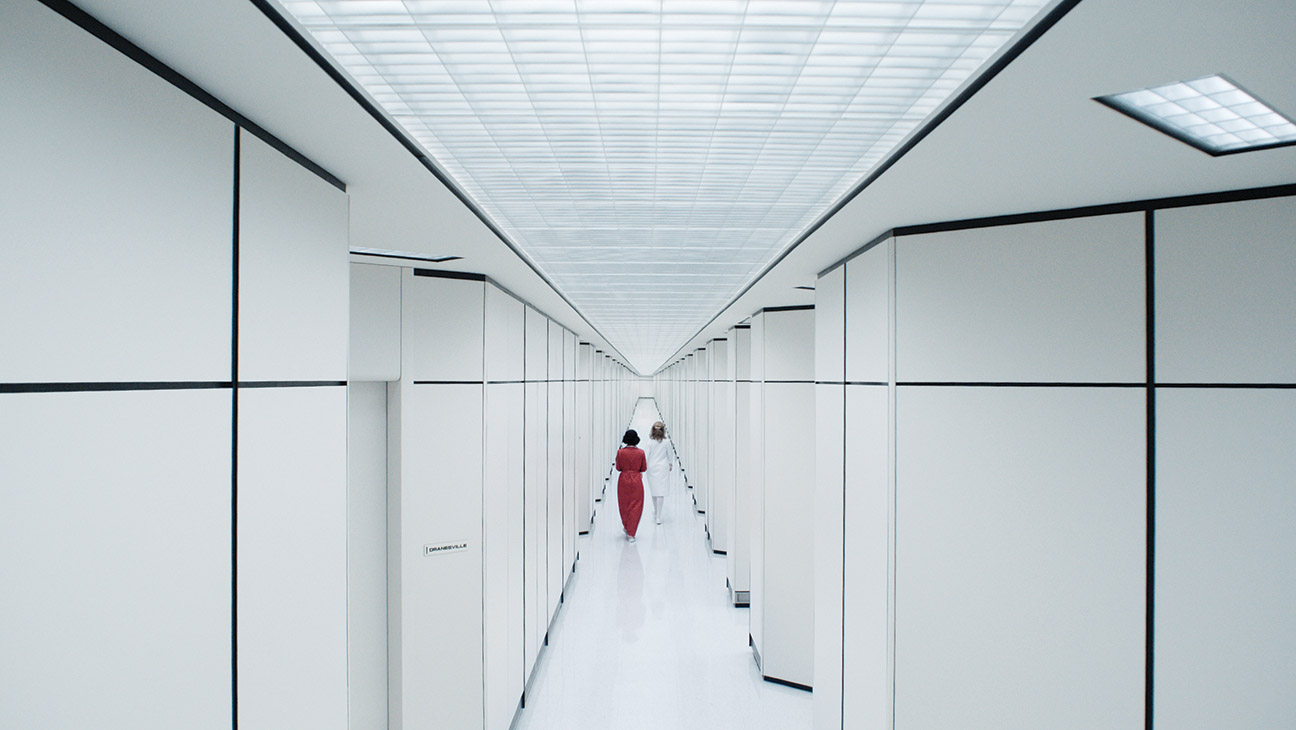
Of all the possible episodes to direct, you chose what might be the most narratively challenging episode of the entire series, “Chikhai Bardo.” Why did you decide to dive into the deep end of the pool on your first go-round?
It wasn’t clear that it was going to be what it ended up being. All I had was a paragraph to go off of, but it was a new world, so that really inspired me. It was not only a new floor [of Lumon], but it was also the past. As the cinematographer of the show, I really wanted to be the one creating that language. Selfishly, I didn’t really want to let anyone else do that. Also, as a woman, I just felt that it needed to be a woman directing. It was an instinctive gut feeling, and I wanted to defend this episode.
Because I’m the cinematographer on the show, I’m there on day one in prep. There’s a difference when you’re there the whole time. You’re able to safeguard an episode, and seven needed that kind of care. It’s not that it needed more work necessarily, but it just needed someone looking out for it. This one was really fragile, so I felt like I could carry it with me the whole time. Whereas, if I would’ve just come in [like a guest director] for a month or two of prep, I wouldn’t have been able to do what we ended up doing.
The advantage of creating one of the few water-cooler shows out there is that Team Severance was basically given carte blanche come season two. You got to shoot on film and spend months on ambitious shots. Would you have been able to achieve this same episode in season one?
Hmm. Film, specifically, probably not. It would’ve been harder. But I feel like season one was also very blessed by Apple. In a weird way, COVID even protected it. We were about to go into production, and then all of that halted. So there was this moment of, “Hey, this is an opportunity to look at the material and question what we’re doing.” No one really got the show or understood what we were doing. Sometimes, Ben and I would be like, “What is this thing that’s happening?” It was creating its own self.
What allowed season two’s seventh episode to be what it is was the fact that I was on the show full-time. I was able to chip away at it because I was already shooting six episodes. There was no proper dedicated prep time for it. I was constantly moving around, but we found ways to make time for it, whether that was me working on a weekend or setting meetings throughout other days. That is really what made it happen.
Long before Severance, you once told Ben that if you ever directed, you’d want to make something “Nolan-esque.” Do you think you’ve done that here given the multiple timelines, the use of celluloid and the tragic love story at the center?
Ben asked me out of the blue [on Dannemora]: “Would you ever direct?” And I said, “No, but if I did, it would be something Nolan-esque.” And, yeah, there are comparisons between episode seven and his work. When you look at something like Memento, there’s the breaking down of time and how you reveal things in a non-linear way. I’m fascinated by that just because I view time in my own way. I think we’ve created time to process and digest what’s happening here. So there’s a comparison, but I struggle to say that.

As director, you functioned as your own DP, except for the filmic flashbacks of Mark and Gemma Scout. What made you delegate in that case?
I’ve shot on film as a DP before, and it’s a privilege to shoot on film. I didn’t take that lightly, and I knew we were doing some technically challenging things like the time-lapse. So I just wasn’t going to be able to be with the actors and be with the cinematography. It was just one step too far. At first, I wasn’t sure if I was going to DP the episode or not. There was a bit of, “Should she? Should she not? Is this a good idea to shoot your own work as a first-time director?” I then tried to hire people for the whole thing, but I couldn’t find the right partner just because of how scattered episode seven was. It wasn’t shot as a block like a typical episode, so me being my own cinematographer made that a lot easier.
And because [the filmic flashbacks] were in another language, I didn’t feel the pressure of having to explain the existing language or move someone through it, which I have had to do with other DPs. We were creating that anew, so it was naturally possible to do that with someone else. I actually even wanted another point of view.

While directing 207, did you account for what you’d end up photographing in 210, particularly the Mark and Gemma Scout material?
There were a lot of conversations. As the arc of the season was being figured out, seven changed a lot to help add weight to the story. In terms of shooting episode ten, I don’t think I made conscious decisions, but one thing that was completely unconscious is that the last shot in episode ten finishes on film. They ended up rescanning that shot onto film, and the funny thing is that it ends up being this red frame of Helly R and Mark S. In episode seven, I really had to fight to get the color red because it wasn’t part of our palette. I intuitively wanted Gemma to have a red dress, and she has a red robe in the Christmas room as well.
In episode seven’s film world, we opened Mark Scout up to all of the colors and the range of emotions that regular life can bring, and it comes back in ten through that moment where we go back to film. This person is choosing to feel again. It may not be Mark and Gemma Scout, but there’s a really beautiful parallel there with Mark S and Helly R. So Ben and I never talked about that, but like I said, Severance sometimes creates its own self. It just moves through us in a way. I see it as a little monster or dragon.
On the Severance official podcast, there are a lot of references to Ben’s preoccupation with hair. Was he rather particular about the way Adam Scott’s haircut and fake beard looked in 207?
(Laughs.) It’s a regular thing with him. He’s just very particular about that stuff. So he liked the idea of cutting Adam’s hair, but it was more complicated as a schedule and production situation. We were so meticulous about the timeline for when he has a beard and doesn’t have a beard. It challenged us and threw us for a loop a couple times, but when Ben saw Judy Chin’s beard tests, he was really impressed with it. Judy is one of the best, and shooting on film is also a lot more forgiving.
On Breaking Bad, Walter White moved into a condo that belonged to creator Vince Gilligan. You did something similar for Mark and Gemma’s house?
Yeah, I am obsessed with locations. I get so involved to the point where I will go out and scout if something is not feeling right. I was having a conversation with the production designer, Jeremy Hindle, and I was just describing what I wanted their house to feel like. And he stopped me mid-conversation to say, “Do you realize we’re going to shoot in your [rental] house?” And I was like, “Oh my God, you’re right.”
It’s the house where I’d already been visualizing the episode in a weird way, and I knew how the light moved inside it. I had been there for two years, and I knew the cherry blossoms blossomed in April. So I wanted to shoot the love scene then, and the timing of that was so magical. My gaffer gave me a little Bolex camera, and I was able to shoot all of these extra little time lapses that played into the time-lapse flash-forward sequence.
I was actually living on the third floor while we were shooting, which I probably would never do again. To live in the house where you’re shooting is very strange, and every morning you’re waking up to construction. I was shooting episode ten, and I’d walk down the stairs to see the art department and the painters [who were preparing for episode seven].
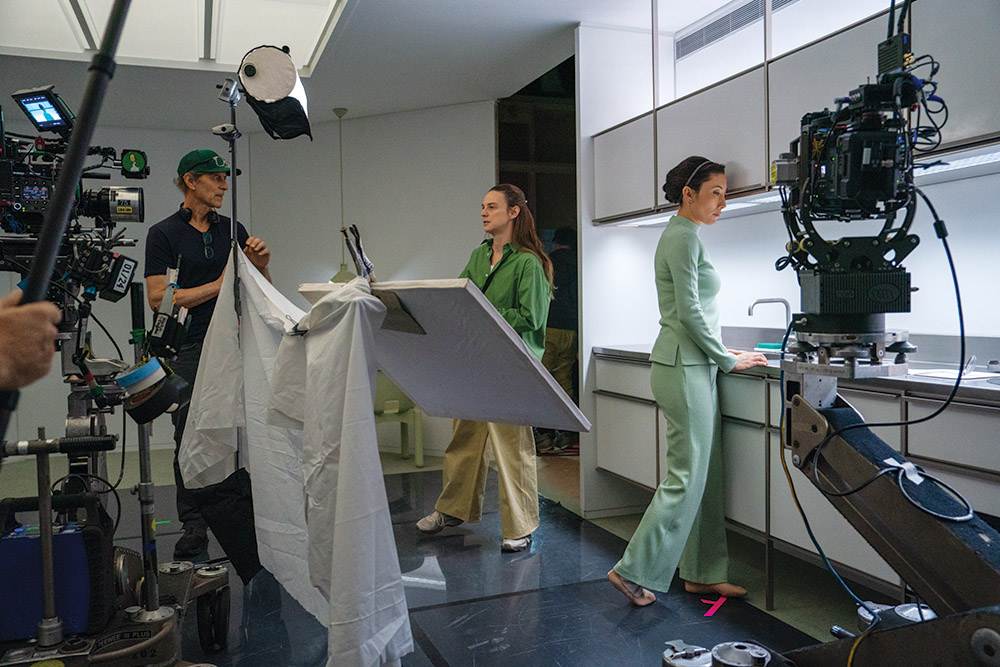
Working with actors on a show where many of them are playing two characters, or, in Dichen Lachman’s case, 26 characters, is yet another challenge in all this. How did you take to that process?
That was the most intimidating part of the process for me. In the past, I’ve definitely hid from actors, and I now realize why. They show up every day and figure out what they’re doing within each scene, and that is something that I’ve struggled to do in my own life. So I was confronted by that, and I really had to understand why we are the way that we are and what makes us react and not react.
Working with Dichen was a lot of talking about life and just seeing how she connected with these specific themes. As two women, it doesn’t necessarily have to do with our own stories exactly, but we can empathize or understand the things that Gemma is going through and connect to it in our own way.
Each [Testing Floor] room was also really fun, and they were like these micro studies of life, which Severance speaks about a lot. One of the hardest character beats to land on was who Gemma is in her own suite. She’s being held captive, so how can she even wake up in the morning? Who can endure that kind of torture? So we tried to just make sense of it in different ways, and we looked into the different states that you go through during imprisonment.
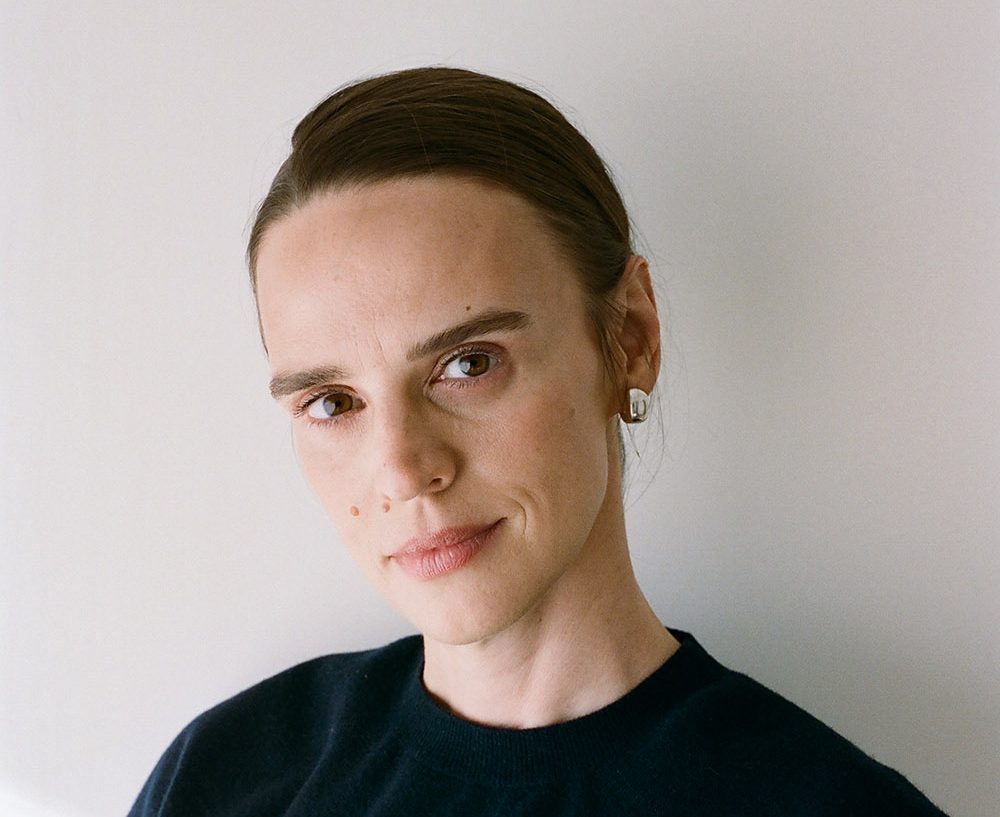
At the end of Ben’s interview with you on the show’s official podcast, it sounded like he was coming to terms with the fact that he was now losing his favorite DP to the director’s chair. Are you officially going to stick with directing now?
Yeah, I think I’m moving … Every time I say I won’t do something, I end up doing it. It’s a curse in my life. So I’m struggling to really say that [I’m moving to directing] because there’s a world where I would still DP for myself, but I’m so excited to work with cinematographers. I’m currently working on my first feature, and the joy it brings me is something I have never felt before in my life. So I want to give myself that chance and that opportunity, but I struggle to say never.
***
Severance season two is now streaming on Apple TV+.
Source: Hollywoodreporter
HiCelebNews online magazine publishes interesting content every day in the TV section of the entertainment category. Follow us to read the latest news.
Related Posts
- Jessie J Reveals Early Breast Cancer Diagnosis
- Warner Bros. Discovery Lays Off Staffers Across Cable Channels
- Richard Gere’s Connecticut Mansion Is Being Stripped from the Inside Out After His Move to Spain: Watch
- Robert and Michelle King Talk ‘Happy Face,’ ‘Elsbeth’ and ‘Evil’ Being Canceled
- Aging CEOs, Ambitious Nepo Babies and a Tech Revolution: Succession in the Music Biz

